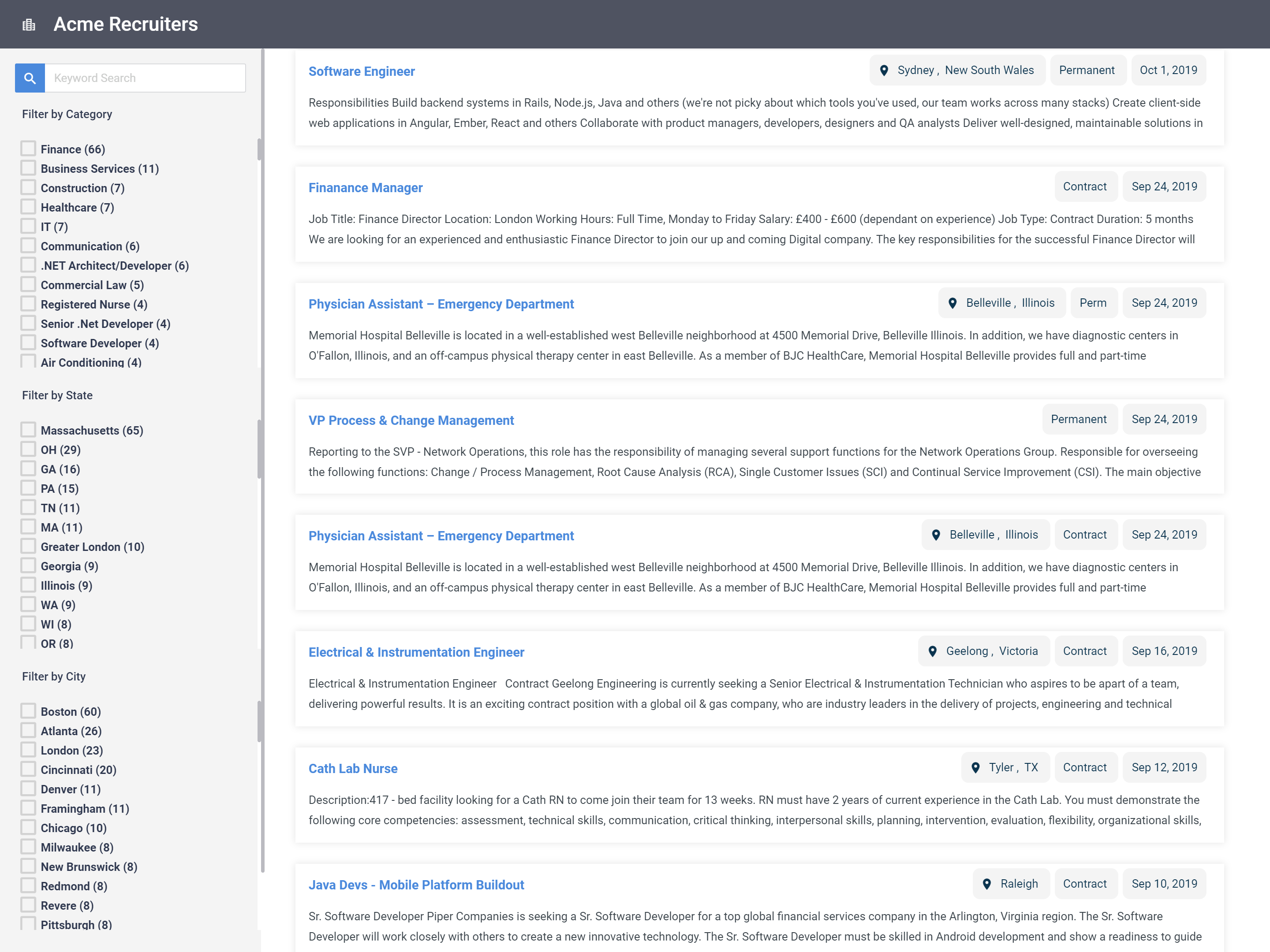Bridging the gap between applicants and opportunities
Bullhorn Career Portal is the next-generation way to share jobs and source candidates from your Bullhorn ATS/CRM instance. Download, configure and host your own career portal, or fork the source code and make it your own.

Features
The Bullhorn Career Portal is open source and extremely simple to customize, but includes several out of the box features that allows you to change what data is displayed on your jobs.
Using Basic Static Host
- Google Analytics to track your candidates’ actions.
- Extremely simple apply form that can be filled out in less than 30 seconds
- Directly integrates with Bullhorn
- Easily update what fields display on your jobs
Using Advanced hosting
- Renders your site server side to save on processing on your candidate’s computer
- Generates jsonld metadata for use with Google and other search engines
- Enables richer job sharing on social media.
- Generates an XML sitemap in addition to an XML feed for use with external job aggregate sites
Configuring & Deploying
Installing
When installing the career portal you have two options, each with their own requirements.
- Advanced
- Enables SEO features
- Basic (Direct Upgrade from Previous Versions)
- Wordpress Plugin
Building for local development
In order to build Bullhorn Career Portal, ensure that you have Git, Node.js, and Angular CLI installed.
Clone a copy of the repo:
git clone https://github.com/bullhorn/career-portal.git
Change to the Career Portal directory:
cd career-portal
Install build tools and dev dependencies:
npm install
Use one of the following to build and test:
npm run serve # Launch a local version of the career portal (frontend only).
npm start # Launch a local server with server side rendering portal.
npm run build:static # Build an optimized version of Career Portal in `/dist`
npm run build # Build a package for use with server side rendering=
Runtime vs. Buildtime Configurations
To maximize the flexibility of application configuration, all configuration-level integrations should derive their
dynamic variables from the app.json file. That file can then be loaded into the application.
Helpful Utilities
- NPM-Check-Updates - checks for updates of node modules with CLI